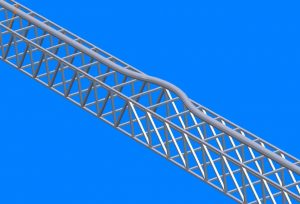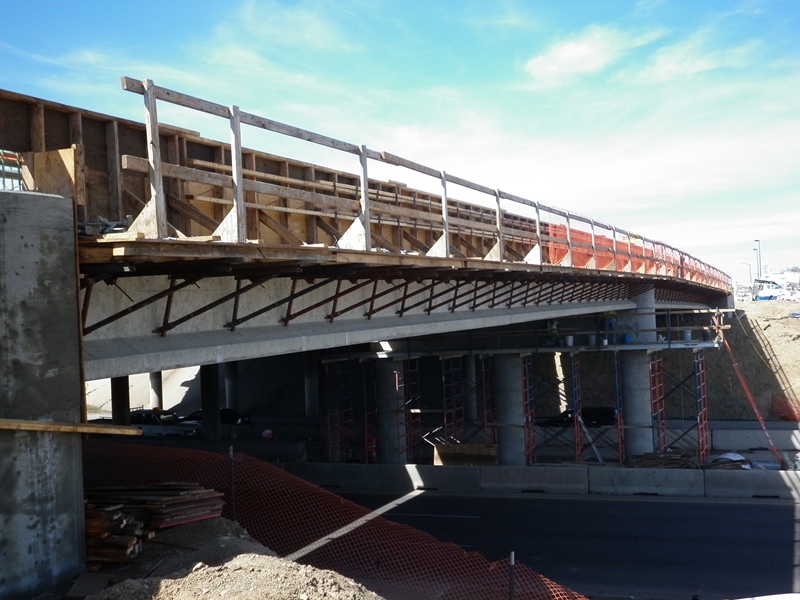Recently there has been a rash of supported scaffold collapses. That’s not good for either the scaffold user or the industry’s reputation. What possibly could be going on? Is it an act of terrorism? Is it due to the fickle finger of fate? Or perhaps, is it just one of those things that cannot be avoided? After all, it is a scaffold.
And therein lies the issue—too few people take scaffolding seriously. Oh sure, OSHA diligently scrutinizes scaffolding on a regular basis, reminding errant erectors and users of their indiscretions and awarding them with citations. Organizations promulgate standards while manufacturers write recommendations and trainers train trainees. And scaffolds still fall down. Something is amiss; there is a piece (or pieces) of the jigsaw puzzle missing. What is the missing link, that missing magic pill that will make the world right? Unfortunately, there is a no magic pill, no easy solution to a correctly designed, constructed and used scaffold. A scaffold requires work, and oftentimes hard work.
It requires an employer to provide training for his or her employees. It requires manufacturers to design and manufacture a safe product. It requires suppliers to provide a safe product. It requires designers to design a scaffold that has the strength to support the anticipated loads and it requires the erectors to build it according to that design. Finally, it requires the user to use the scaffold correctly. Is that too much to ask? Apparently it is if the recent disasters are any indicator.
Correctly designed and erected scaffolds are incredibly strong, much stronger than a typical structure. And still, the scaffolds collapse. Adequately trained employees won’t abuse, misuse or alter a scaffold, but the scaffolds still collapse. What’s the secret to stopping this epidemic of failed scaffolds? It’s easy: Do your job. Here are a few factors that will influence a scaffold’s decision to collapse or not to collapse:
- Make sure you are using a legitimate product, one that has accurate load charts based on testing performed in compliance with the SSFI recommended testing procedure.
- Manufacturers, see #1. Just because your stuff looks like someone else’s stuff doesn’t mean you can use their test data.
- Purchasers, see #1 and #2. There is a reason prices vary; find out why before you buy that really cheap container load of frames.
- There is a limit on what a scaffold can hold and that limit is based on the scaffold being correctly designed and erected. Mess with the design or the erected scaffold and you’re courting disaster.
- Bad or no design: Supposed scaffold designer, just because you can put parts and pieces together doesn’t mean you are a designer. After all, a five year old can assemble tinker toys. Learn how to do it correctly, not just do it.
- Lack of adequate bracing: Do you know what the correct bracing pattern is? Do you know what the bracing does?
- Poor foundation: Just because there is a piece of wood under the leg doesn’t mean you have a good foundation. You have to know what’s holding up your scaffold. You can’t do that by guessing.
- A bad platform: Do you have any idea why a wood plank can support a load?
- Lack of adequate fall protection. This is a good one—talk about misinformation!
- Inadequate strength: You must know how much the scaffold can support so you don’t overload it.
- OSHA, see # 10 so you can correctly cite # 1926.451(a)(1).
- Inadequate or no training: Employer, do you know that you are to provide training for your employees? Keep in mind that the training requirement has been in existence since at least 1971.
- Lack of knowledge: Both employers and employees have to comply with the OSHA standards. How can you do that if you never read them?
- Not knowing what you are doing: Erectors are supposed to know how strong scaffolds are and what the scaffold will be used for after it is erected. I cannot remember one who could tell me when asked.
- More not knowing what you are doing: A person known as the “Competent Person” has to be able to identify the hazard and have the authority to eliminate it. How can you eliminate the hazard if you cannot identify it?
- Still more of not knowing: How do you know there is a hazard if you do not know what a properly designed and erected scaffold is?
The fact of the matter is that many supported scaffolds erected and used in North America do not comply with the critical obligatory safety standards. Sure, everybody knows that platforms are to have guardrails but that is but one aspect of a scaffold. Very few know the capacity of the scaffold, very few know which bracing is permissible and which isn’t; the list goes on. My experience shows me that the industry has too many unqualified people guided by other equally unqualified people.
OSHA compliance officers do not get sufficient training to do their jobs anywhere near the level of competency that they need. While we can, and should, blame an administration that does not provide high quality training at the necessary levels, it cannot be an excuse for a lack of knowledge. Frankly, knowing the regulations is a lot of work but if you are going to assume the authority you had better also take the responsibility and learn the subject matter at hand.
Too many people think that merely fitting the parts together is good design. Fit has nothing to do with proper design. If you are a designer, it is expected that you have learned how to design. Just because you are an engineer, or an erector, or a scaffold company owner, or a safety manager does not make you a designer. You must have the training, experience, knowledge and education to do the job. This includes knowing the principles of physics, the regulations, and the limits of the equipment. Remember, just because it fits together doesn’t mean a darn thing.
Simply stated, scaffolds do not collapse. A stack of metal, wood and plastic parts and pieces incorrectly called scaffolds collapses. Which one do you want? More importantly, what are you going to do now to make sure the next temporary structure you are involved with is a scaffold and not a stack of stuff?













